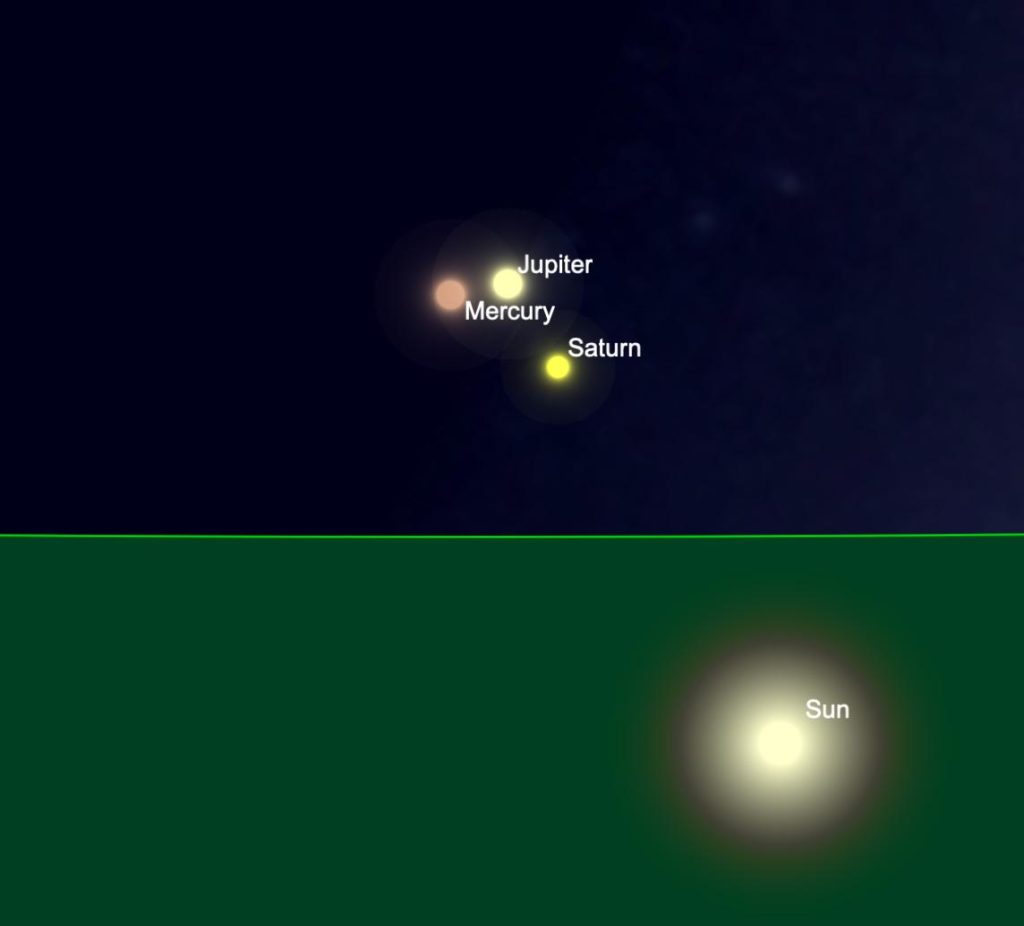Sky Report: January 11 – January 17

Jupiter and Saturn were in conjunction last month, and at their closest they were separated by a scant 1/10°. They’re still close, and on the 11th they’re separated by 2½° and remain a nice double planet in binoculars. But Mercury joins them, and for a few days only you have the opportunity to see three planets simultaneously in a pair of binoculars – an extremely rare sight you don’t want to miss! On the 11th Mercury is only 1½° straight to the left of Jupiter and on the 12th Mercury is 2¼° to the upper left of Jupiter. Mercury moves farther away but you should see all three planets together in binoculars through the 14th. Mercury is half as bright and Saturn 1/12th as bright as Jupiter.
The trick is that they are very low in the southwest during twilight so you’ll need a) a very clear sky free from haze, b) a very low horizon, and c) binoculars. You also have a very narrow window of time and must look within a few minutes of a half-hour after sunset. Seeing the triple planet gathering will be challenging but rewarding.
Jupiter and Saturn set 4 minutes earlier each day and we’ll lose them at the end of the week, but Mercury is making a good appearance and will be around the next three weeks, getting higher and setting later each evening until the 24th, when it reverses course and begins to set earlier each day. There will be more on Mercury in the next two Sky Reports.
The easiest planet to see now is Mars. Mars was closest and brightest in October but it will be around until summer. It’s presently high in the south as darkness falls, and because it’s in an empty part of the sky without bright stars to compete, you can’t miss it. A telescope will reveal its small orange disk.
In the morning sky Venus is as close to the horizon one-half hour before sunrise as Jupiter is one-half hour after sunset, but Venus is so bright that you have a better chance to spot it. Look very low in the southeast, and again you’ll need a very low horizon. Venus is moving ahead of the earth and around behind the sun and we’ll soon lose it to sight, not to return until late May when it slowly reappears in the evening sky.
Graphic created with SkySafariAstronomy.com
The Sky Report is presented as a public service by the Stellar Vista Observatory, a nonprofit organization based in Kanab, Utah, which provides opportunities for people to observe, appreciate, and comprehend our starry night sky. Additional information is at www.stellarvistaobservatory.org. Send questions and comments to
John@StargazingAdventures.org.






Comments are closed.